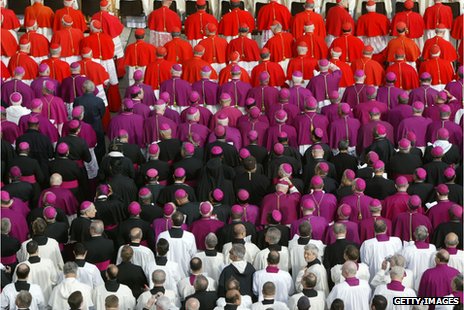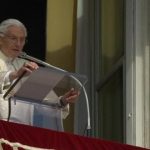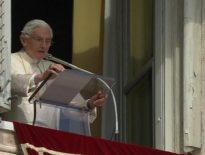As Pope Benedict XVI prepares to step down next week, speculation is intensifying as to who will lead the reported 1.2 billion Catholics worldwide. But how did the Vatican arrive at that figure?

The figure of 1.2 billion, in theory, represents the number of people who have been baptised into the Catholic faith.
This might seem like an easy figure to calculate. Many people assume that when someone is baptised this is recorded and passed on to the Vatican.
But religious organisations vary in how much importance they attach to keeping good statistics, according to David Voas, professor of population studies at the University of Essex’s institute of social and economic research.
“The Catholic Church tends to be a little more on the relaxed end of the scale and along with that you have got to remember it’s an absolutely huge organisation. There are more than a quarter of a million Catholic parishes.”
So the reporting process can be a bit hit and miss.
“In practice, parish priests are asked to estimate the size of their flock. That’s partly a function of how many people turn up to mass, but they also make some sort of guesstimate of the number who might come along for rites of passage like baptism, first communion, weddings, funerals and so on.”
As you can imagine, with such a vague notion of who to count, the methods used to estimate the number of Catholics are not consistent from parish to parish. The Vatican Statistical Yearbook itself points out this variation:
“It must be remembered that a worldwide survey of this kind is bound to be influenced by some extent by the often considerable differences in the circumstances of the ecclesiastical jurisdictions in various countries.”
Of course, it is all very well counting baptisms, but this means that anyone who has lapsed or left the Church altogether or has even died may still be counted – a problem which faces every religion.
“It would be one thing to count baptisms but another to count when people have left, either spiritually or physically,” says Voas.

“The Mormon Church tackles this problem in an interesting way. They basically assume that everyone stays on the books unless they hear otherwise or they turn 110. Up to that point, in principle, you could be part of statistics.
“The Catholic system doesn’t try to track people in such detail but there is a problem with counting in and not having such a good system for counting out.”
So is there another way to count Catholics?
The Pew Research Center in the US makes its own estimates by counting people who self-identify as Catholics. It collates census and survey data and its latest estimate stands at 1.1 billion, 100 million lower than the figure put out by the Vatican.
Conrad Hackett, a demographer from The Pew Center’s forum on religion and public life, does not think their figure is in conflict with the Vatican’s. He says it is just measuring something different.
He gives the example of Brazil. According to the Vatican, 163 million people are identified as Catholic, but the 2010 Brazilian census shows that just under 127 million people identify themselves as Catholic.
“There is widespread acknowledgment that many Brazilians who grew up Catholic are now worshiping in Protestant churches,” says Hackett.
Although the Pew Center’s numbers for Brazil are lower than the Vatican’s, this isn’t true for all countries, particularly the US. According to Hackett, this is mainly due to the migration of Catholics.
“Of a population of 75.4 million self-identified Catholics in the US, 22.2 million (30%) were born outside the United States,” he says.
But even the Pew Center research comes with caveats.
“These counts include people who seldom pray or go to worship services. In the United States, for example, 17% of self-identified Catholic adults report that they seldom or never attend worship services,” says Hackett.
And if you do the maths behind the figures, this is hardly surprising.
“If you think even with a quarter of a million parishes that still means you’ve got four or five thousand self-identified Catholics on average per parish, and that’s far more than you could fit in church over the course of a week,” says Voas.
So there may be more than a billion people who call themselves Catholic, but if they all turned up to Mass this Sunday, there would probably be a bit of a squeeze to fit them all in the pews.





